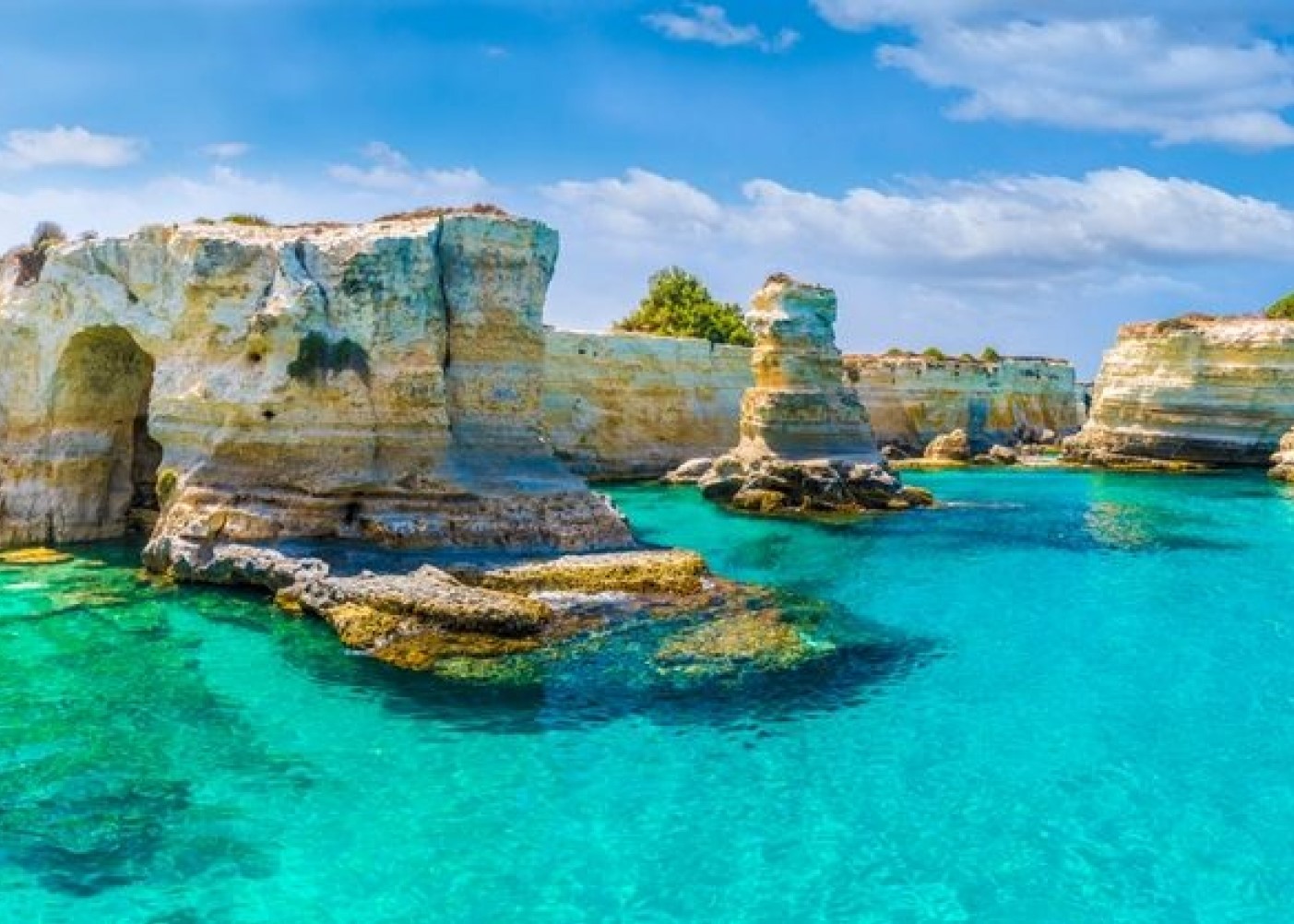
Apulia has long been a crossroads of peoples and cultures for its natural and geographic attributes; a bridge between East and West, it is a promontory that separates the Adriatic from the Tyrrhennian Sea.
A hamlet of Castrignano del Capo, in the Province of Lecce, Santa Maria di Leuca is the southernmost point in Salento, striking the visitor’s eye for its colors and unreal silence. At the center of it all is the Church, the original Santa Maria: first a sanctuary, today it is the Basilica of Santa Maria De finibus terrae (at the ends of the earth).
Also standing on this promontory with Santa Maria di Leuca is the famous lighthouse (157 ft tall, standing at 335 ft above sea level), while Marina di Leuca is situated further below, made up of Punta Mèliso to the east (at the feet of the promontory) and Punta Ristola in the west.
The Basilica was fortified in 1700 to protect against Turkish and Saracen assaults, but visitors today need not worry: they can frequent the buzzing seaside of Leuca in peace, admiring its ancient port and strolling its charming coast, rich as it is in oleanders and Art Nouveau villas (sometimes made eclectic with additional Moorish designs). These 19th-Century residences, although dramatically touched by the events of the Second World War - they were used to house the displaced, while their balustrades and railings were converted into arms - are still an important tourist attraction (open for interior visits in the month of May).
But above all, a visit to Leuca is a significant review of a long history, marked by rupestrian settlements, crypts, churches, castles, hundred-year-old olive trees, hidden coves and inlets, and a sea that is blue like no other.
And it is from the port of Leuca that fishermen and tourists alike set sail for the nearby grottoes – dei Giganti, del Presepe, del Diavolo and del Drago – they were actually settlements in the Neolithic Era, while today they draw plenty of tourists due to the efforts by local tourism groups to organize visits by boat and underwater excursions. The Grotta del Diavolo (i.e. Devil’s Grotto) takes its name from the urban legend that demons inhabited it, thus explaining the loud and lugubrious rumblings that can be heard there. Meanwhile, the Porcinara, that spans three different environments, bears incisions on its walls referring to Jupiter and other mythological characters, and the Grotta del Presepe owes its name to the stalactite formations that resemble a Nativity Scene (in Italian, presepio).
Santa Maria di Leuca has also been part of the Otranto Coastal Park - Santa Maria di Leuca and Tricase Forest for several years now, created to preserve not only the important plant and animal species – but also the architectonic treasures – of the Apulian coast.
Leuca, approximately 43.5 mi from Lecce, is within the zone known as Salento, which it exhibits fully via its perfumes, sounds and colors. The sounds of the Taranta, the smell of tomatoes, olive oil and oregano that top the typical frise (or friselle), and the blue hues of sky and water that, from the promontory, bleed into one. The summation is a singular experience for any visitor venturing to Leuca, that is, to “the ends of the earth.”



